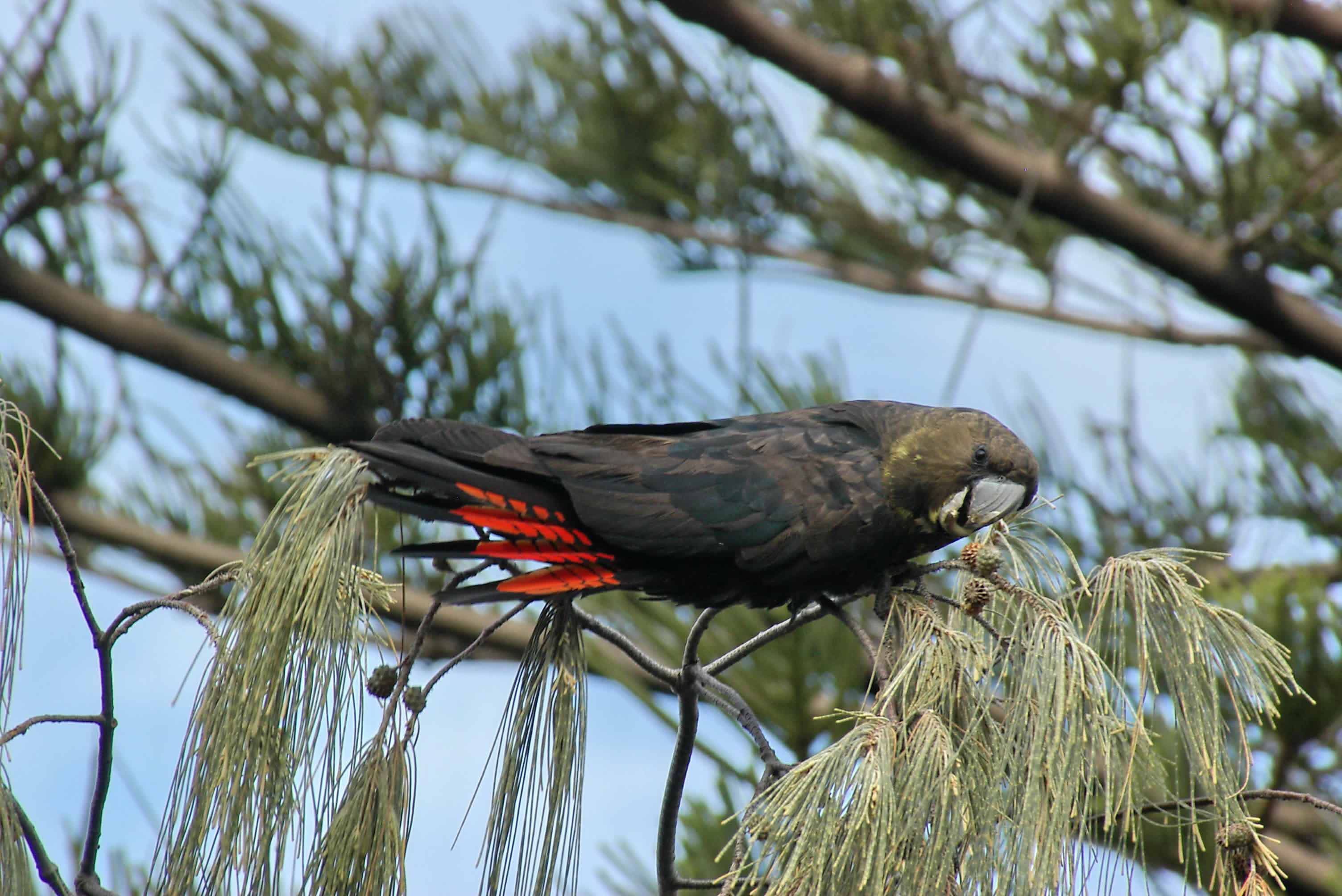Partnering with government agencies, private enterprise, researchers and the wider community to increase awareness, protection and conservation of the Glossy Black-Cockatoo across south-east Queensland and north-east New South Wales.
The Glossy Black Conservancy
The Glossy Black Conservancy was officially formed in 2005, an initiative led by Biodiversity Assessment and Management Pty Ltd (BAAM) with support from Brisbane City Council, Redland Shire Council and Consolidated Rutile Ltd. Since its formation, the Glossy Black Conservancy has attracted additional Partners in local government departments, private conservation agencies and academia throughout south-east Queensland and north-east New South Wales. Support continues to grow. Government agencies, private sectors and the community are stakeholders that the Conservancy wishes to collaborate with in order to conserve the Glossy Black-Cockatoo across the region.
Aims and Goals
The specific aims of the Conservancy outlined in 2006 were to:
COORDINATE
Coordinate the assessment of Glossy Black-Cockatoo resources across local government areas in south-east Queensland.
ENGAGE
Engage with the community to assist in record collection.
RECORD
Manage a central database of Glossy Black-Cockatoo records which can be accessed by government agencies.
RESEARCH
Continue research aimed at increasing current knowledge of the species’ use of pioneer vegetation, fidelity to individual feed trees, requirement for nesting hollows and diurnal and seasonal range, with a priority to map vital resources for Glossy Black-Cockatoo in south-east Queensland.
MANAGE
Develop a Regional Management Plan for Glossy Black-Cockatoo (see the conservation guidelines reviewed in 2022 here).
Our Partners




By submitting your sightings, you are helping the Glossy Black-Cockatoo by providing critical information about its distribution, which will assist the long-term management of the species in the region.
Glossy Black Conservancy Friends
If you wish to know more about the Conservancy, have any questions about Glossy Black-Cockatoos and upcoming activities, or wish to become a friend or partner of the Glossy Black Conservancy and support our conservation efforts, contact us now.

